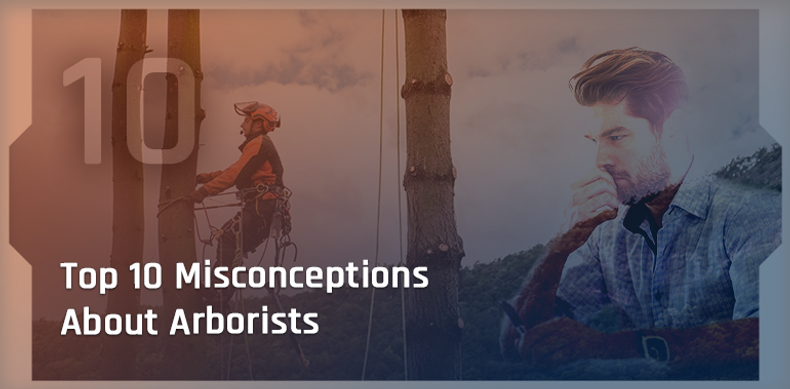At Pelican Ropes we interact with arborists regularly because of the products that we sell - including specialized ropes and gear designed with tree climbing in mind. Arborists tend to have a lot to say, including when they are happy with what we are doing and in those rare cases where they really feel like we could do something to improve our products.
We have come to rely on their input to help us improve our products and services. We also have come to respect the incredibly challenging work that they do every day on the job.
One thing that is clear to us is that a lot of people have no idea what arborists do. Heck, there are some people out there that have never even heard the word “arborist.”
We figured we would put together a shortlist of misconceptions that people have about who arborists are and what they do.
1. Arborist Is Just Another Word For “Lumberjack”
You can call arborists a lot of different things mostly starting with the word “tree” - tree surgeons, tree climbers, tree specialists, tree workers, arboriculturists. We would suggest that you don’t call them late for dinner, you don’t call them Shirley, and that you don’t call them lumberjacks.
Arborists sometimes do remove trees for various reasons. A large chunk of arborists prefer to remove trees as a matter of a last resort and 8 out of 7 days would prefer to treat a tree rather than cut it down. Trees are generally removed by arborists as a matter of safety or if they are damaged beyond repair.
2. Arborists Don’t Care About The Environment
Some folks see that arborists work with trees and figure that they must not care much about the environment. The truth is that a good arborist will have a great reverence for trees. A significant part of arboriculture is centered around Plant Health Care or PHC for short which emphasizes the importance of using natural treatments over synthetic chemicals. A good arborist will also take care to use gear that does minimal structural damage.
3. Arborists Sleep With Chainsaws Under Their Pillows At Night
This one is simply a vicious rumor. Most arborists don’t even use pillows.
4. Being An Arborist Requires No Education Or Training
Tree work is super dangerous and absolutely requires extensive safety training. People who are serious about becoming an arborist often go through rigorous certification programs. There are also further certifications required for urban forestry, applying pesticides, and other specialty skills used by many arborists. In addition, many companies require at least 3 years of experience in the field for all employees.
5. Only Men Can Be Arborists
The arborist field is increasingly becoming more and more diverse. Every year more women are becoming successful arborists and kicking major butt!
6. Tree Work Is Only For Young People
While tree work is incredibly physically demanding, it is not uncommon for people to work in the arborist field for decades. In fact, one of the most prominent voices in the arborist world is a gentleman named Blair Glenn, who is well into his 60’s. We highly recommend checking out his videos which can be found on his YouTube channel.
Because tree work is so physically challenging, you will find that the older folks working as arborists are incredibly fit for their age!
7. Arborists Live In Tree Houses
This is another strange rumor. Every arborist that we have spoken to either lives in a house, an apartment, or a well-fortified castle.
8. Arborists Mostly Work In Forests
It is easy to understand why people may think arborists spend most of their time in forests, but this just isn’t the case. Arborist work is generally done at residences, in parks, or around businesses.
9. Arborists Only Work For Rich People
Urban Foresters and Municipal Tree Workers make up a large segment of the arborist field. These folks often work on urban improvement projects which benefit people of all economic classes. This work is often funded by city municipalities or non-profit organizations. If you are more interested in learning about this subject, check out our post on Urban Arborists.
10. When You Hire An Arborist, The More Pruning They Do, The Better
The principles of arboriculture and Plant Health Care dictate that pruning should be performed conservatively. Pruning should be done in a manner that does not damage the structure of a tree unnecessarily and should be focused on removing limbs that are diseased, badly damaged, or pose a serious risk to safety or property. Allowing for trees to grow naturally will increase their lifespan and keep them healthy.
Wrapping It All Up
Hopefully, after reading this list you know more about arborists and what their work entails. If you enjoyed this post, check out our other blogs for more information about the arborist trade, and stay tuned for more content in the future! Arborists may sometimes be a bit misunderstood but the work they do is incredibly important.





